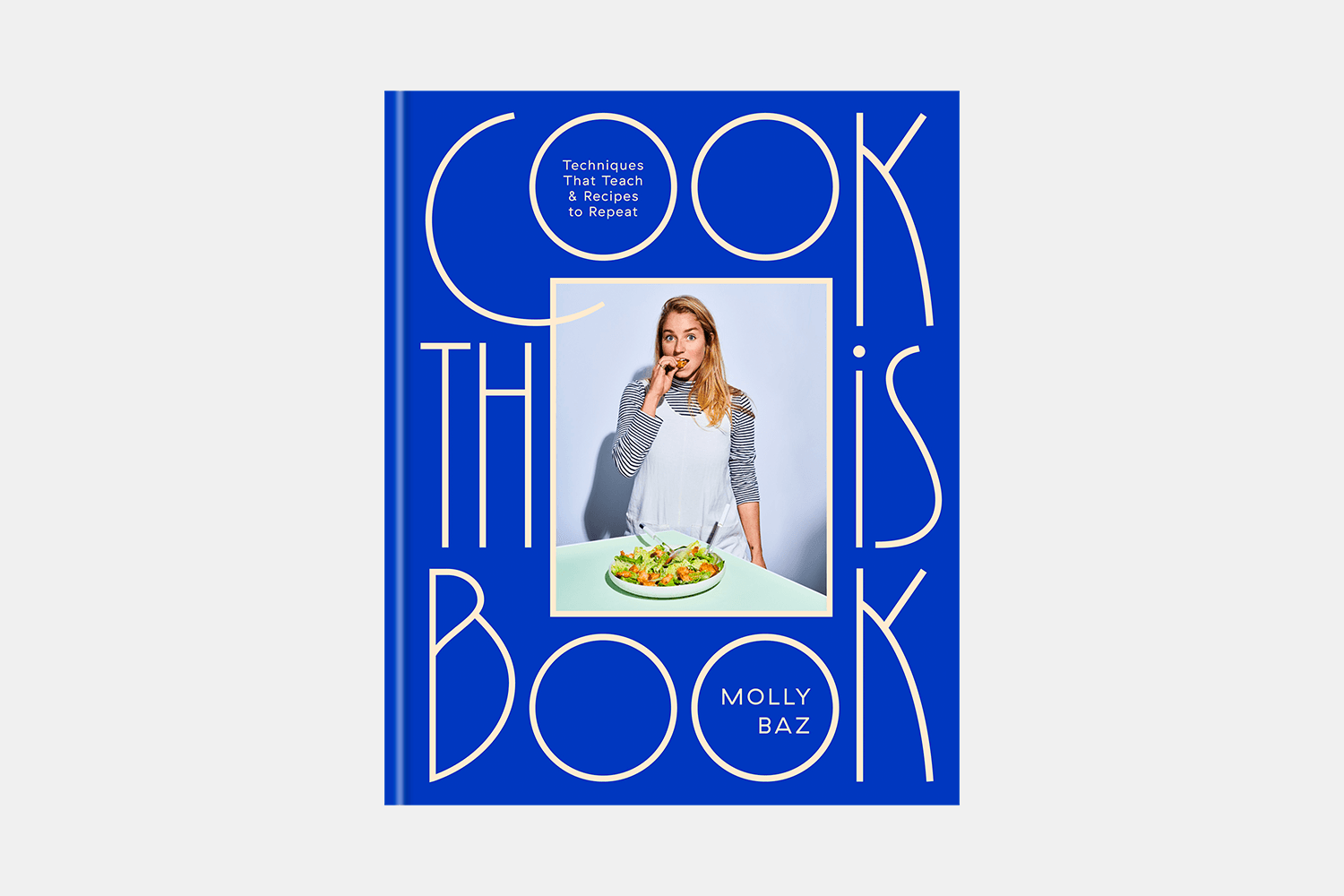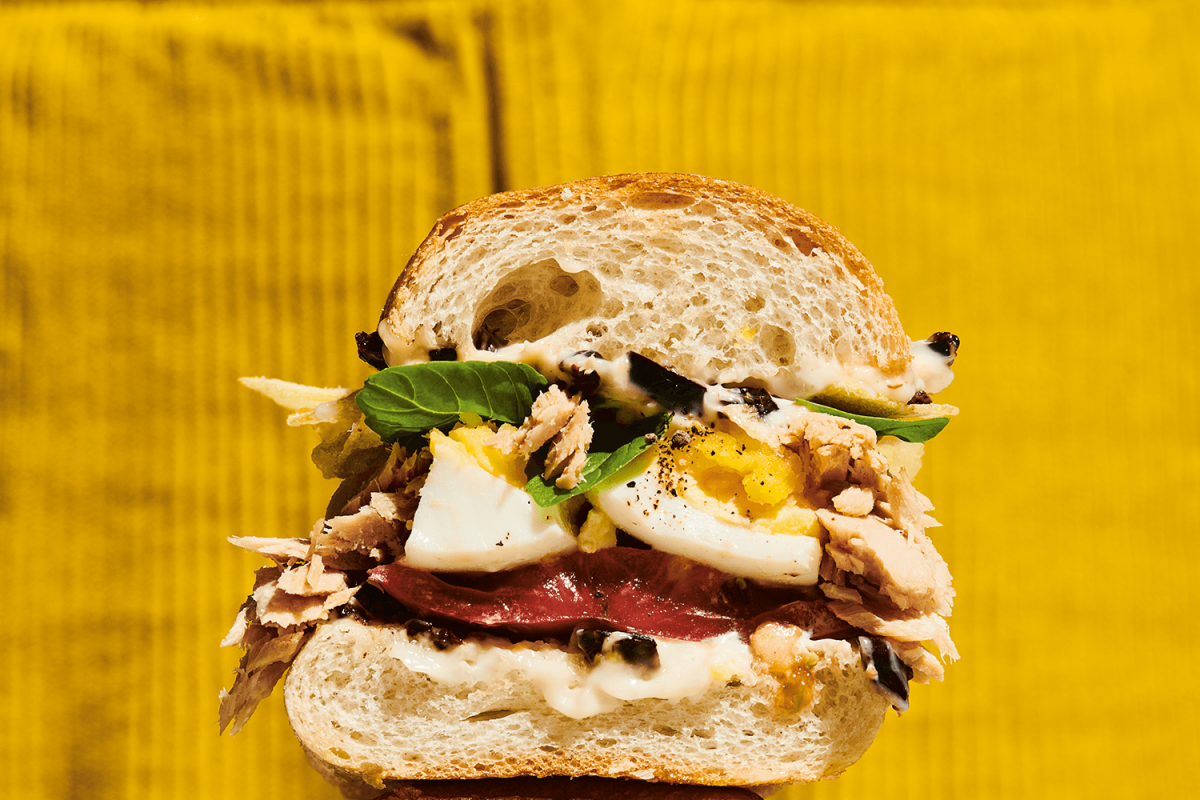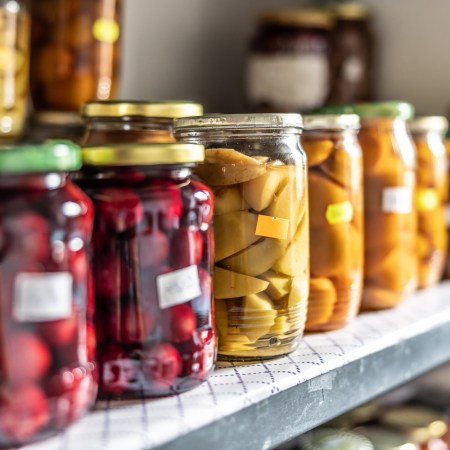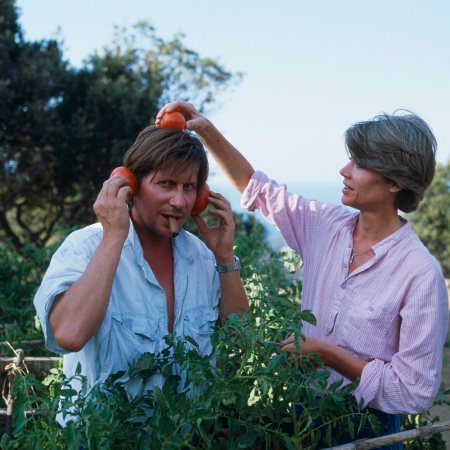Molly Baz wants you to know that cooking a delicious meal at home is well within your wheelhouse. No matter how little you know about seasoning, how few dishes you’ve successfully created or even if don’t know how to sauté an onion, it just takes practice and an acceptance that you will make mistakes. In fact, she would like you to know that even now, after years of living and breathing food and recipes, she still occasionally over-seasons her food. The best way to become a better home cook is simply to go for it. And her new book, Cook This Book, works perfectly as a guide as you develop the techniques you’ll need to go from a good home cook to a great one.
While Baz has garnered a reputation as an excellent recipe developer, her book is not just a collection of prescriptive recipes. She offers not only the know-how but also, maybe more importantly, the know-why. If you do it right — if you cook her book — you’ll have essentially gone to culinary school and, eventually, won’t have to follow her recipes to a T.
Because, as she tells InsideHook, “I know that there is not just one definition of delicious, so I hope people feel empowered to tweak things to satisfy their own x-factor. You have to believe in your own food. My most delicious meals are ones where I can see the food or feel it and it’s delicious to me. We’re having our own dialogue, me and whatever is in the pan, and you can taste that love, you know?”
Following recipes published by trustworthy sources is certainly a good first step to improving your own skills. But if you’re anything like Baz when she first began her career, you might think that relying on cookbooks is a sign of weakness in the kitchen. “I used to think that recipes were things for people who don’t know how to cook,” she says, but after working at Bon Appetit she’s changed her tune. “The first few months of being a food editor at Bon Appétit really changed the way I think about recipes, and I just gained a lot of respect for them because I realized, working in that test kitchen, that actually recipe developers spend days on recipes, they’re repeatedly tested and really thought through. They’re really great learning tools and some of the best meals you can have are those that are derived from recipes, because someone else has done all of this leg work for you. There is infinite knowledge to be gained through recipes even when you’re a professional.”
Having received much of her culinary knowledge by testing recipes and understanding that a cook book can offer much more than a list of dishes to try, Baz thoroughly relays the information she’s gleaned over the years. “My biggest takeaway from the years I’ve worked as a recipe developer is that standard recipes that you find out in the world oftentimes assume a lot of knowledge on the cook or the reader that is not necessarily there. I write my recipes in a way that assumes nothing, basically. If you’re a great cook and you already know all of it, you can skip through the explanations and information. But if you’re not a professional cook, there is so much to be learned, and there is no reason to leave it out. Because if you do so, and you just say ‘chop an onion, sauté it, do this do that’ no one is really learning anything or understanding why they are being asked to do that. So, there is not this cumulative education that the reader is gaining. That is why I write them that way, because I want for someone, if they cook all the way through my book, I want them to think ‘I understand cooking now’ or ‘I am equipped with the tools that I need to now go into the kitchen and if I don’t have all the ingredients in a recipe, I can muscle my way through things because I learned why and now just how.’”
But, by Baz’s philosophy, if you want to get down to the essentials, the real heart and soul of what makes a good meal, you need look no further than the almighty sandwich. Her sandwich-osophy: “It’s the platonic ideal of a food in many ways because it checks so many boxes. There’s protein and carbs and fat; it’s one meal all wrapped up between two slices of bread. But I love that within that architecture there is infinite possibility. So, it’s something about the architecture of a sandwich that really draws me to them.”
To get a deeper understanding of this platonic form of food, she gave us some insight into what she thinks makes a good (or bad) sandwich and rattles off some of her all-time favorites.

InsideHook: Most overrated sandwich?
Molly Baz: PB&J. Though I don’t hate them, my co-host on the podcast, Declan, doesn’t understand a pb&j, can’t get behind it, and we spent some time where I tried to convince him of the merits of the PB&J, but I feel like it has become this iconic sandwich that has a time and a place but it maybe doesn’t deserve the glory that America gives it.
Most underrated sandwich?
I really love a classic, cold tuna salad sandwich. I feel like everybody goes wild for a tuna melt, and I feel like tuna salad gets this really humble rap, but a really superlative tuna salad sandwich that’s so cold and crunchy and juicy, is maybe one of my favorite things in the world.
Best regional specialty?
My favorite sandwich of all time is the Italian hoagie, or sub, or hero, or whatever you want to call it. But it’s different in every region, so it’s kind of a cop-out answer. Because a lot of different parts of America, a lot of different states, have their own take on the sandwich. And there is a lot of loyalty to whatever the version of that sandwich is in that particular place. And I love all of them. I feel like that’s the regional sandwich that I love the best.
Best left to the pros?
Pastrami or Rueben, or really anything with a cured and smoked meat. Unless you’re a master of smoking your own meat at home and are really ambitious, it’s probably better to get that out in the world from someone who has spent their whole life honing their craft. I feel similarly about barbeque sandwiches, where there is such a long history in culinary tradition and it’s one of those where it’s better left to the pros.
Easiest to make at home?
The BLT. One of my other favorite sandwiches of all time, it’s really easy to crisp up some bacon and then you’re literally just assembling the ingredients. In my opinion, it’s only appropriate to eat them in the summertime, but it’s the perfect summer sandwich.
Easiest to make on the go?
I’d have to say PB&J again. It’s a sandwich that doesn’t get worse as it sits, and that’s maybe it’s most unique quality.
A sandwich that should be easy but is frequently done wrong?
The Italian. Most people associate their best Italian sandwiches at Italian delis. But for me, the Italian is a sandwich that requires a lot of attention in two ways. One, starting with good ingredients is crucial to the success of that sandwich. If you have mediocre deli meats, the bar is already set kind of low because that’s fifty percent of what the sandwich is made up of. And then, two, it’s a sandwich that requires a lot of acid and a lot of heat and spice, to combat all of the fattiness of the meats and the cheeses. And when people make them at home, I think they just throw together some lettuce and red onion and maybe some spicy pickles, but they’re not really dressing the sandwich. And when I make an Italian at home, I make a really wet, vinegary, iceberg and giardiniera slaw basically, that soaks into the bread and is the perfect foil for all of the meat and cheese. I feel like acid is the thing that most often gets overlooked in sandwich making in general.
Most underused sandwich ingredient?
This one is tough because I use so many different sandwich ingredients all of the time. I just wrote a newsletter the other day, in which I opened upmy fridge and did a tally on the sandwich ingredients in my fridge and I realized “Oh, there’s twelve different kinds of pickles in here, ten kinds of cheeses, six kinds of bread.” My kitchen is so stocked with sandwich ingredients at all times.
However, I think anything acidic, in general, is really overlooked by the other iconic sandwich ingredients like meats and cheeses, lettuces and pickles. I try to pay attention to the acidity in sandwiches. Vinegars and citruses and herbs are something that I try to incorporate into my sandwiches because it brings freshness and brightness and life to sandwiches that are otherwise kind of one note.
Favorite place you’ve eaten a sandwich?
In my recent memory, I spent my birthday in COVID at a lake with my best friend and family, and we just popped by an Italian deli not thinking it would be anything particularly revelatory, but it was maybe one of the best sandwiches I’ve ever had, just from this random place. I think it was a time and a place thing, where my expectations were low, I was with family and friends, it was COVID but we had figured out a way to have a birthday party that was safe. It was all those things coalescing together for a perfect sandwich moment.
Can you remember a sandwich that someone made for you that made you jealous you hadn’t come up with it yourself?
My co-host, Declan, made a sandwich for me that was a baguette with butter, oil-packed tuna, lemon juice, and salt. It wasn’t a tuna salad, there was no mayonnaise, no celery, nothing else in it. Just butter and tuna, and it’s one of his favorite sandwiches, and it was a lightbulb moment for me because of course I’ve had a ham and butter sandwich, or salami and butter sandwich, and there’s something so satisfying about a sandwich that is reduced to its most essential parts where there is just no bullshit.
Every Thursday, our resident experts see to it that you’re up to date on the latest from the world of drinks. Trend reports, bottle reviews, cocktail recipes and more. Sign up for THE SPILL now.


















